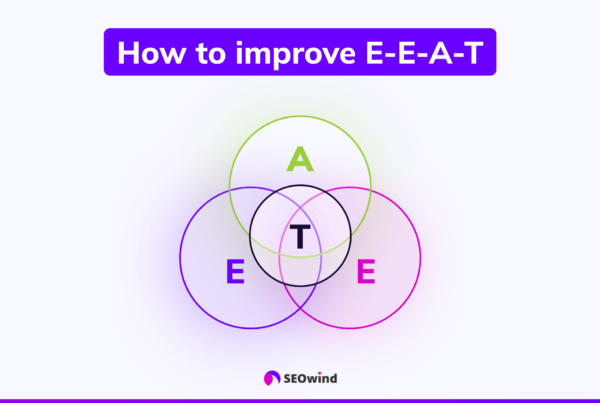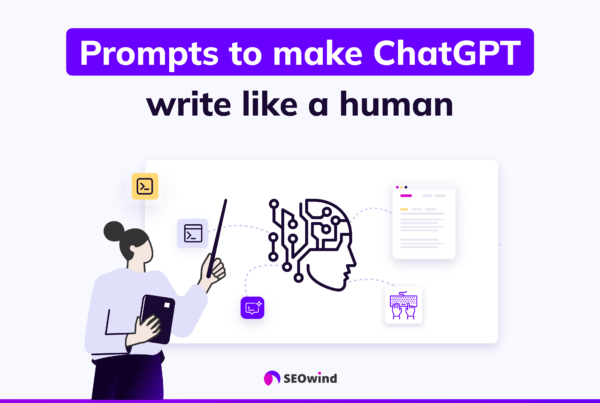Crafting an impeccably engaging, informative, and captivating introduction can decide if your blog post will hold its reader’s attention or join the abyss of digital content that goes unnoticed. The key to this enigmatic art is mastering specific principles for creating a compelling start. In this comprehensive guide, I’ll walk you through seven essential steps to achieve the perfect blog intro. Stay with me to discover insights into what makes an excellent blog post introduction, examine examples of both good and flawed introductions from some top blogs, explore tools that could aid your writing process, and learn enriching techniques for crafting impeccable intros.
What is a Blog Post Introduction?
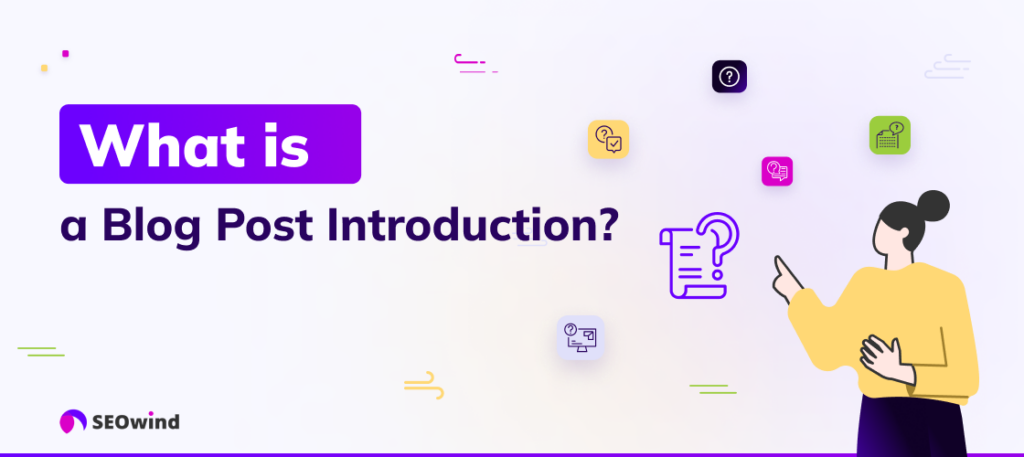
A blog post introduction serves as your article’s opening paragraph(s), designed to captivate the reader’s attention while unambiguously outlining the topic covered throughout the post. It immediately sets the tone and functions as a pathway into your article’s subject matter by providing context and establishing relevance for your target readership.
By fine-tuning these first few lines, you’re setting yourself up for success; a well-executed intro yokes readers’ interest endowing them with compelling reasons not only to read on but actively engage with your content. Ultimately, it forms a significant part of how they perceive and react to your writing style, expertise, and overall value proposition – all within milliseconds.
Why Is It Important to Write a Great Blog Post Introduction?
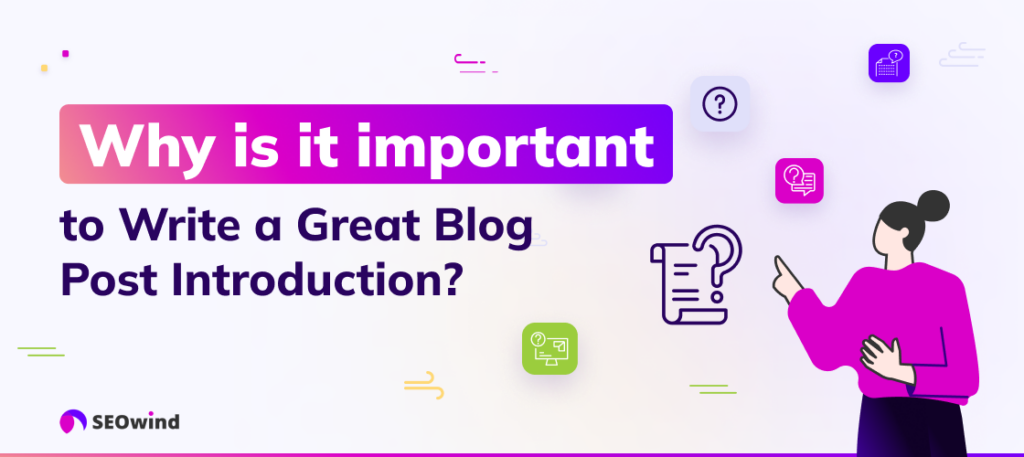
A captivating blog introduction is crucial for two core reasons: enhancing reader engagement and improving search engine optimization (SEO).
Engagement
The most critical factor in sustaining your audience’s attention is an enticing blog post introduction. When readers decide whether to invest time in reading your content, they often base their decision on the first few lines of the text. An effective blog introduction should:
- Spark interest
- Convey the importance of the topic
- Establish a connection with the reader
- Set expectations for what makes your post unique.
Achieving these elements in your introduction will encourage readers to explore further, boosting the overall engagement rate for your content.
Moreover, high-quality intros significantly reduce the bounce rate – when visitors leave after only viewing one page or post – as well-structured and engaging introductions tend to keep readers on-site longer.
SEO
SEO refers to the content marketing practices that help search engines understand and rank your content higher in their results pages. A persuasive blog post introduction can positively impact SEO by:
- Including relevant keywords: Integrating appropriate primary and secondary keywords within your blog post intro helps search engines recognize its relevance during indexing, potentially increasing rankings.
- Facilitating context understanding: Writing a clear and concise introduction assists search algorithms in comprehending the message delivered by your content, leading to better recognition of your expertise on that specific subject.
- Boosting social shares: If you captivate readers from the onset, they’re more likely to share your post and interact with it through likes or comments, ultimately contributing to improved organic visibility.
In summary, writing an outstanding blog introduction goes beyond making it interesting; doing so directly affects user engagement statistics while setting up consistent foundations for successful SEO efforts. Crafting compelling intros becomes paramount if you seek audience recognition and positive appraisal by search engines.
Elements of Good Blog Post Introductions

Creating an engaging introduction for your blog post is crucial in capturing the reader’s interest. Focusing on the main elements of an effective blog introduction ensures that your content resonates with your audience and drives them to continue reading. Here are four key factors to consider when crafting an attention-grabbing and compelling blog introduction.
Capture Attention
An attention-grabbing opening is one of the most important aspects of a successful blog introduction. There are various ways you can accomplish this:
- Share a surprising fact or statistic – Providing readers with interesting information immediately piques their curiosity.
- Tell a captivating story – Utilize storytelling techniques to engage and entertain your readers.
- Use humor, if appropriate – An amusing anecdote or joke can help lighten the mood and encourage further reading.
Remember that providing relevant and substantial value for your readers is pivotal, avoiding clickbait language at all costs.
State and Uncontroversial Subject with a Complication
Introducing your topic by stating an uncontroversial subject paired with a complication keeps your readers intrigued, as they’ll be curious about how you’ll resolve this predicament. This technique to hook readers ensures they read on to discover more about your opinions and solutions.
For example: “Everyone knows regular exercise contributes to better health; however, finding the motivation to hit the gym daily proves challenging.”
This statement recognizes common knowledge but hints at a complexity (the issue of motivation) that will be further discussed in the article.
Get to the Point Quickly
A concise yet informative approach works best when constructing a blog introduction. Avoid lengthy explanations or unnecessary information—remember, every second counts when retaining reader interest! Aim for easy-to-read sentences (around 15 words maximum) that cover essential aspects of your topic early on.
- Be direct: Clearly state what issue(s) you’ll address in your article.
- Stay relevant: Ensure you’re providing useful and pertinent information from the get-go.
- Write clearly: Use plain language to convey your thoughts, avoiding jargon or overly complex terminology.
Set the Stage for the Impending Argument and Structure
Lastly, preparing your reader for what they can expect throughout your post is essential. Be transparent about the content structure by offering a brief overview of upcoming sections:
- Offer a preview: Mention the main themes or ideas that will be explored further inside each segment of your article.
- Explain benefits: Show readers how they’ll benefit from consuming your content (e.g., learning crucial information or solving specific problems).
- Lay out arguments: If applicable, hint at disputable perspectives you’ll present later in the piece; this tactic piques the reader’s curiosity.
A strong introduction sets clear expectations so that, once engaged, readers know what to anticipate as they continue through subsequent stages of your blog post. With these four key elements in mind, crafting an exceptional blog introduction should also become more manageable and enjoyable!
Examples of Great Blog Post Introductions

A well-crafted blog introduction sets the tone for the rest of your content and entices readers to continue exploring. To create a compelling introduction, examining examples from reputable sources is helpful.
The Wall Street Journal
The Wall Street Journal consistently delivers in-depth articles that captivate audiences with engaging blog introductions. The writer immediately draws readers into the article by starting with a powerful opening statement or thought-provoking question. Additionally, The Atlantic often incorporates relevant statistics or facts to establish credibility upfront. This combination generates curiosity and invites readers to explore further, creating a good blog introduction.
“In America today, there are almost as many people making their living as bloggers as there are lawyers.” (Source: WSJ) -> https://www.wsj.com/articles/SB124026415808636575
This introductory sentence from the WSJ blog post cites an interesting statistic that grabs readers’ attention and encourages them to learn more about this growing professional landscape.
The New York Times
The New Yorker excels at crafting narrative-driven introductions with vivid descriptions and evocative storytelling techniques. They sweep readers into their articles by immersing them in enriching environments or characters’ lives through anecdotes or observational humor. Such captivating intros lay solid groundwork for the following intellectual and entertaining material.
“As a young man, Kazuo Ishiguro wanted to be a singer-songwriter. Last October, when he received the Nobel Prize in Literature…he still had files of unpublished lyrics.” (Source: The New York Times) -> https://www.nytimes.com/2017/10/05/books/nobel-prize-literature.html
This intriguing blog introduction presents an unexpected fact about the acclaimed writer, making readers eager to learn more about his journey from music aspirations to literary success.
HubSpot
HubSpot is renowned for its comprehensive marketing, sales, and customer service resources. Their blog introductions adeptly combine three essential elements – presenting a problem or need, offering relatable context or examples, and briefly mentioning their solution. This winning approach portrays credibility while promising valuable insights tailored to their target audience.
“When I graduated college with a biology degree (don’t ask me why), I knew one thing for sure: My science career had ended. But if not science…what would my next steps be?”
HubSpot’s opening demonstrates empathy toward new graduates at crossroads in their careers by sharing a personal story before delving into actionable advice on transitioning between fields.
Examples of Bad Blog Introductions
It’s essential to learn not only from good examples but also from mistakes made by others. Analyzing flawed blog post introductions can help us understand what to avoid and improve our own writing skills.
Not connecting with the reader
Avoid too excessive self-reference. Don’t speak about your experiences and opinions without considering the potential benefits for readers. Don’t take too long to get to the actual topic of discussion or offer any valuable insights.
For instance, instead of starting with something like “I recently attended a conference where I learned…”, consider turning it into an actionable tip: “Attending industry conferences can lead to invaluable networking opportunities and innovative ideas.”
Avoid too extensive a backstory
Avoid an extensive backstory before delving into the main subject matter – so much that impatient readers might lose interest and skim past crucial information. When crafting an introductory post or introducing new concepts, try connecting dots quickly instead:
- Present relevant background data (if necessary)
- Immediately address how it pertains to your intended topic
- Offer captivating statements that create anticipation for forthcoming points
Cutting down generic phrases and providing unique angles immediately helps retain readers’ attention throughout longer articles containing technical information.
Avoid clichéd language
The primary issue stems from beginning sentences with mundane, clichéd language that makes their message sound repetitive and uninspired. Furthermore, the first few lines lack specificity, causing readers to question whether this content will offer any new insights.
Avoiding common phrases like “In today’s world” or “Now more than ever” keeps your writing fresh and engaging. Consider starting with an eye-catching statistic or posing a provocative question that immediately sparks curiosity.
Remember, rectifying poor introductions isn’t just about eliminating red flags but also implementing improved storytelling techniques to connect with readers on a deeper level. Learning from these examples helps us refine our introduction to blogger skills – ultimately allowing for better reader engagement and higher-quality posts.
Tools for Writing Blog Post Introductions
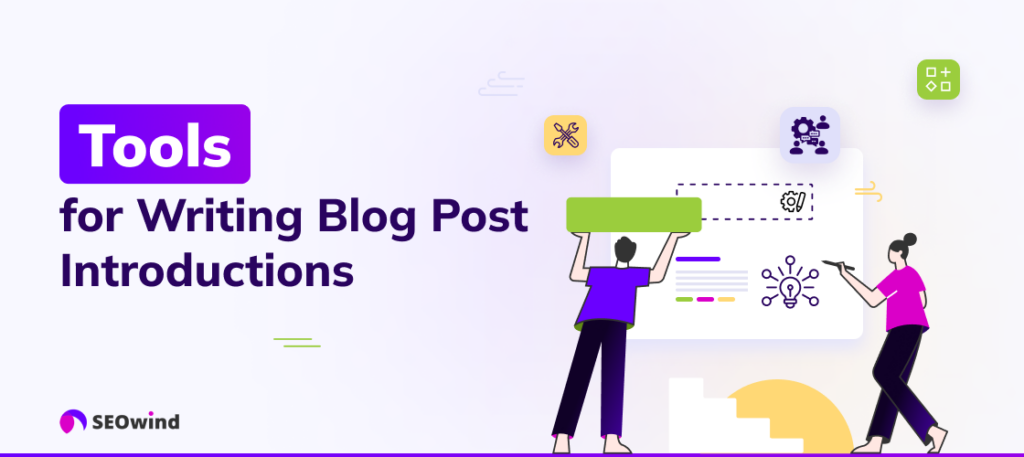
Many tools can help you craft the perfect blog introduction. Using such tools can assist in finding the right words and maintaining reader engagement. This section will explore various resources for writing a concise and attractive blog introduction.
SEOwind
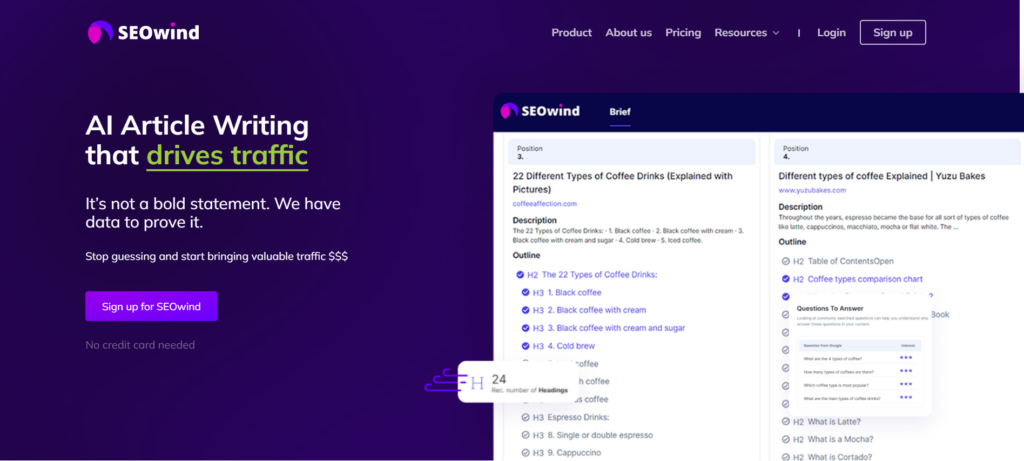
SEOwind is a long-form AI Wirter. Although it doesn’t let you craft the introduction individually it will create the whole article for you. What’s unique about this tool is that its AI content is based on thorough research of top-performing content, comprehensive outline, and keyword analysis. This results in high-quality articles that drive traffic and conversions.
Jasper AI
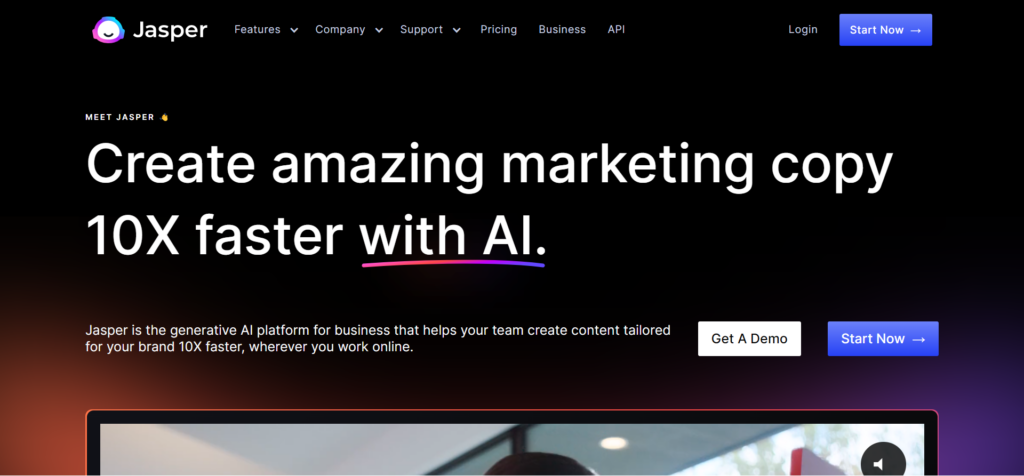
Jasper AI is an artificial intelligence-powered copywriting assistant known for generating high-quality content. With its advanced language model capabilities, it can ensure that your blog introduction post stands out from the rest. Additionally, Jasper AI caters to different writing styles and audiences, making it a versatile choice when developing catchy and better blog introductions.
Copy AI
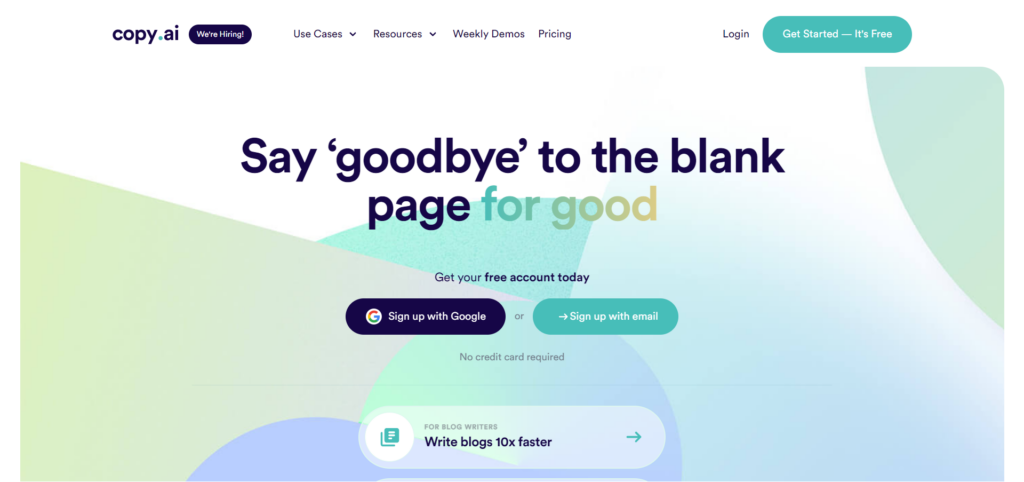
Copy AI is another great tool that uses artificial intelligence to streamline your content creation process. The platform offers several options for creating engaging blog introductions, including frameworks for storytelling techniques and direct questions that address readers’ pain points. Simply input basic information about your topic, and Copy AI will generate potential introductions for you to choose from or modify as needed.
Copywriting Frameworks
Several tested copywriting frameworks are proven to generate effective results when applied correctly. These frameworks provide templates designed specifically for optimizing your introductory text:
- AIDA: Attention, Interest, Desire, Action (a simple four-step structure)
- PAS: Problem-Agitate-Solve (an approach focused on highlighting problems and solutions)
- BAB: Before-After-Bridge (demonstrating contrasting scenarios before diving into the discussion)
Leveraging these established frameworks give your blog introduction a strong starting point and serves as a foundation for generating effective, engaging content.
Ultimately, your choice of tools will depend on your individual preferences and needs. Experimenting with different resources can help you determine the best fit for creating memorable blog introductions that align with your style and resonate with your target audience. Remember that captivating blog introductions are crucial in ensuring reader engagement and maintaining their interest throughout your post – so invest time perfecting this essential aspect of blogging success.
How do you start a catchy introduction?

A catchy blog introduction is crucial for engaging your audience and encouraging them to keep reading. Grabbing their attention from the beginning is essential, ensuring your content is worth their time.
Now let’s explore some tactics for creating attention-grabbing introductions:
- Share an interesting fact or statistic: Start with a captivating stat or fun piece of trivia relating to your topic. This will draw readers in and establish credibility by showing you’ve done thorough research.
- Open with a thought-provoking question: Asking your reader a direct question forces them to think and become more engaged with the subject. Moreover, presenting this question helps reveal the problem your post intends to address.
- Create curiosity through intrigue: Use mystery and suspense from the start by introducing subtle points of interest about your article’s core idea—potentially leaving out specific details that will be addressed later.
- Use personal anecdotes or stories: Anecdotes connect with readers emotionally, making them more likely to invest time into reading further about the experiences shared in your writing.
- Emphasize the benefits of consuming certain information: Clearly outline what value readers can expect from investing time into reading your content; explicitly stating these advantages encourages continued engagement.
- Incorporate humor when appropriate: Witty remarks can endear audiences and leave lasting impressions within moments of starting an article—make sure any undertones directly relate to relevant topics explored throughout each respective contribution.
As you continuously focus on refining introductions, remember that these initial sentences or paragraphs must remain succinct. Longer preliminary exposés risk empowering your audience to lose interest, despite using any combination of the abovementioned strategies. Ultimately, practice is key; over time, playful experimentation with differing introductory styles will guide you toward crafting captivating beginnings each reader quickly finds irresistible.
Tips for Writing an Effective Blog Introduction
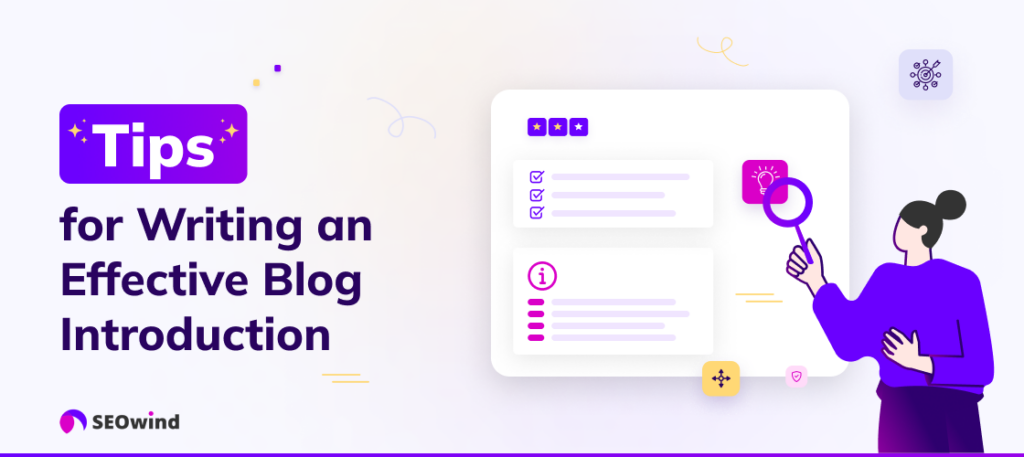
An engaging blog introduction sets the tone for your post and convinces readers to stick around. Crafting a captivating intro ensures that your audience remains interested in your words. Below are seven techniques to help make your blog introduction irresistible, using examples of how these methods can be effectively applied.
Tip 1: Start With an Interesting Statistic or Quote
Incorporating an unexpected statistic or a thought-provoking quote can instantly grab readers’ attention and pique their curiosity. For example:
“Did you know that 93% of online experiences begin with a search engine? Improving your website’s SEO strategy is crucial for driving organic traffic and boosting visibility.”
This statistic highlights the importance of SEO, giving readers a reason to keep reading and learning more about the topic.
Tip 2: Ask the Reader a Direct Question About the Problem the Post is Addressing
Posing a question directly relevant to the reader’s challenges gets them thinking about the issue. It engages them by addressing their specific needs:
“Are you struggling to keep track of your daily tasks and set productive goals?”
By phrasing it as a direct question, readers feel like you’re talking specifically to them, generating interest in your solutions.
Tip 3: Tell Readers How You’ve Solved the Problem
After gaining your reader’s interest through statistics or questions, hook them further by sharing how you’ve solved their problem before diving into details. For example:
“Having managed remote teams across different time zones for years, I discovered three key strategies that enhanced overall productivity and communication.”
The personal experience indicates credibility and motivates readers eager for answers.
Tip 4: Paint a Picture in the Reader’s Mind
Using vivid language helps establish an emotional connection with your writing. By painting a picture in their mind, they feel genuinely involved in your narrative:
“Imagine waking up every morning full of energy, excited to start your day with a well-balanced breakfast and heart-pounding workout all before 9 AM.”
The descriptive language creates an enticing scene for the reader, stirring their imagination.
Tip 5: Confirm Their Mistakes
Acknowledging common errors gives readers the reassurance they need that they’re not alone in their struggles and demonstrates empathy. For instance:
“You’ve likely tried countless diet plans or workout regimens without seeing any lasting results. You’re not the only one! Many people make simple mistakes that hinder progress.”
This approach shows understanding while offering hope by implying solutions to those mistakes that lie within your post.
Tip 6: State the Topic of the Post
Being transparent about what your next blog post will cover is crucial. A clear statement helps readers understand exactly what information awaits them in the article:
“In this blog post, we’ll explore five essential tips for personal branding on LinkedIn, creating a strong online presence to maximize career opportunities.”
By stating the topic upfront, you align expectations, ensuring interested readers keep reading.
Tip 7: List All the Questions a Reader Might Have About the Problem
Creating a list of questions addressing your topic’s different aspects builds anticipation and curiosity. It promises valuable insights in answering those specific inquiries:
“Will artificial intelligence take over our jobs? How can we adapt to new technologies? What does automation mean for future workplace structures?”
Listing such questions lets readers know what issues your post will tackle; each question builds momentum as it checks off various concerns about AI’s impact on employment.
Tip 8: Know Your Reader’s Psychology
Understanding your readers’ psychology is crucial in crafting a captivating blog post intro. It allows you to address their pain points, interests, and motivations directly. To do this:
- Identify your target audience’s demographics: age, gender, location, and occupation.
- Determine the most common problems or topics they seek information on.
- Figure out what type of language resonates best with them.
By getting into your reader’s mindset, you can tailor the blog introduction to grab their attention and make it relatable.
Tip 9: Show Them the Value of Your Post
Highlighting your post’s value enables readers to understand how the article may benefit or satisfy their needs. This approach convinces them that investing time in reading the blog post is worthwhile. To demonstrate the value effectively:
- Clearly state what problem your post aims to solve or what question it answers.
- Mention the actionable takeaways or advice readers can gain from consuming your content.
- Share any unique insights or perspectives you’ll dive into throughout the post.
Ensure that these statements are concise and straightforward so readers can quickly grasp how your article stands out from others on similar topics.
Tip 10: Use Storytelling Techniques
Incorporating storytelling techniques in your blog introduction helps captivate readers from the beginning while providing context for the topic. Consider employing one or more of these methods when introducing a new subject:
- Utilize an interesting quote relevant to your subject matter—preferably by respected individuals within the industry—to establish credibility.
- Share a real-life anecdote relating to the blog’s theme, demonstrating your experiences or knowledge.
- Use an engaging metaphor or simile to contextualize complex concepts.
Remember, weaving a compelling narrative or providing pertinent quotes in your blog introduction creates an inviting atmosphere for readers to delve deeper into your content.
Is it good to write a long introduction when writing a blog post?
Whether it’s beneficial to write a long introduction when crafting a blog post depends on the context, your target audience, and the topic. While longer introductions are occasionally necessary for complex subjects or in-depth analyses, keeping them concise is generally more effective. Below are some points discussing all the differences and various aspects one should consider while debating the merits of writing a lengthy introduction.
Striking the Right Balance
Aim towards providing enough information in your introduction to give readers an idea of what they can expect from your post without revealing too much. An extensive intro may risk losing interest before delving into the main content. Try striking an optimal balance between divulging essential facts and retaining reader engagement.
Considering Your Target Audience
When deciding on the length of your blog introduction, always keep your target audience in mind. Reader preferences vary depending on demographics, preferences, and even industries; catering to these factors is essential when setting the tone and length of your introductions. If you’re addressing busy professionals who value brevity over verbosity, go for shorter intros that make every word count.
Simple Language and Readability
Regardless of the length, ensure that your blog introduction is easy to read by using simple language and maintaining readability levels no higher than grade 9. This makes it easier for readers across varying educational backgrounds and expertise levels to comprehend your message effectively.
Attention-Grabbing Hooks
As you compose an introductory blog post example for any topic, remember that attention spans have dwindled in this age of digital overload – especially among online readers who hop rapidly from one site to another. As such, shorter intros coupled with captivating hooks tend to fare better with modern audiences as they’re designed to pique curiosity immediately.
In conclusion, opting for a long blog introduction isn’t always the best choice. While there are specific scenarios where they may be appropriate, you’re better off keeping your introduction concise and engaging. So, always consider the context, audience preferences, readability, and crafting strong hooks while choosing the most suitable format for your blog introductions.
